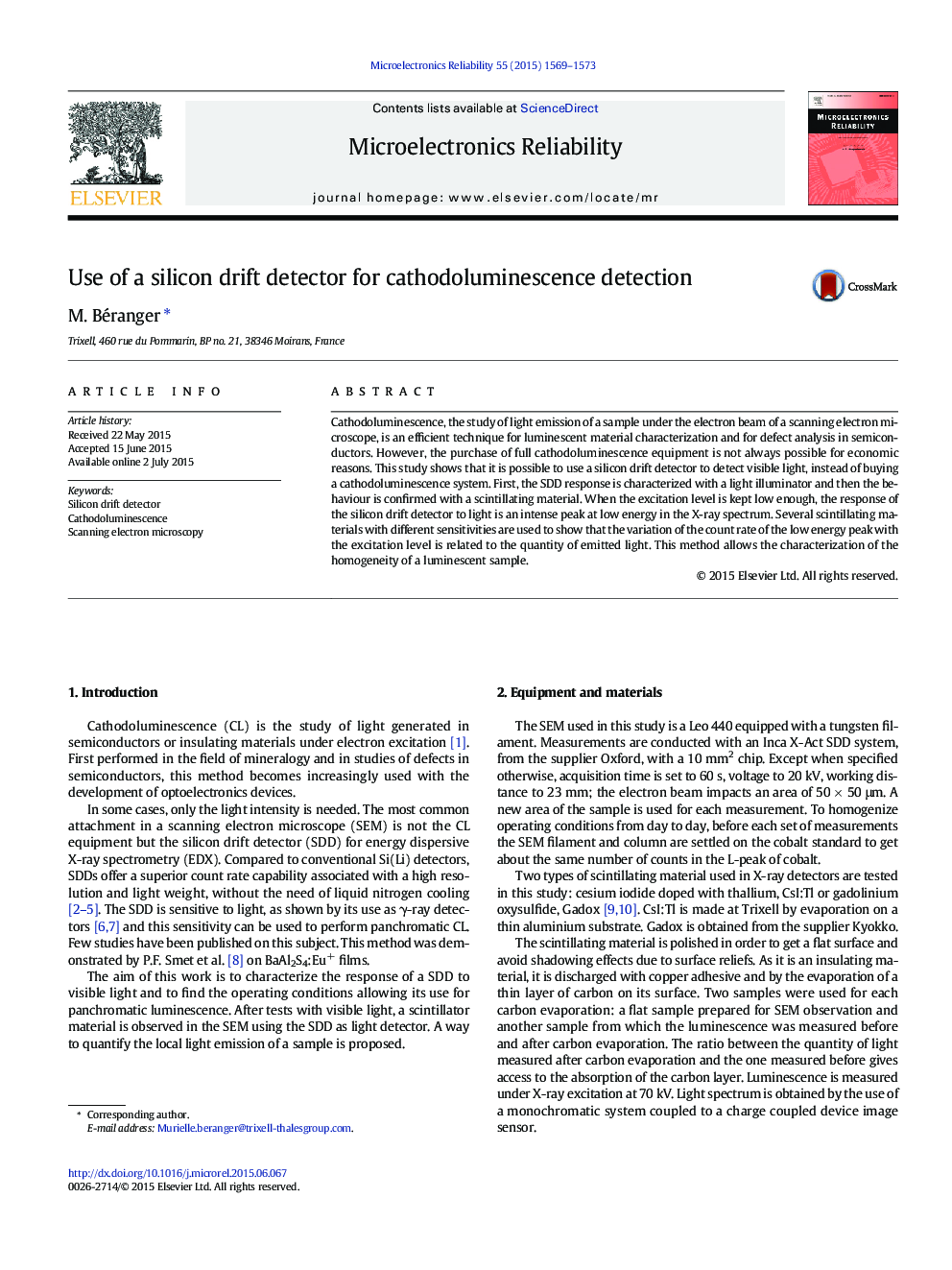| Article ID | Journal | Published Year | Pages | File Type |
|---|---|---|---|---|
| 6946650 | Microelectronics Reliability | 2015 | 5 Pages |
Abstract
Cathodoluminescence, the study of light emission of a sample under the electron beam of a scanning electron microscope, is an efficient technique for luminescent material characterization and for defect analysis in semiconductors. However, the purchase of full cathodoluminescence equipment is not always possible for economic reasons. This study shows that it is possible to use a silicon drift detector to detect visible light, instead of buying a cathodoluminescence system. First, the SDD response is characterized with a light illuminator and then the behaviour is confirmed with a scintillating material. When the excitation level is kept low enough, the response of the silicon drift detector to light is an intense peak at low energy in the X-ray spectrum. Several scintillating materials with different sensitivities are used to show that the variation of the count rate of the low energy peak with the excitation level is related to the quantity of emitted light. This method allows the characterization of the homogeneity of a luminescent sample.
Related Topics
Physical Sciences and Engineering
Computer Science
Hardware and Architecture
Authors
M. Béranger,
